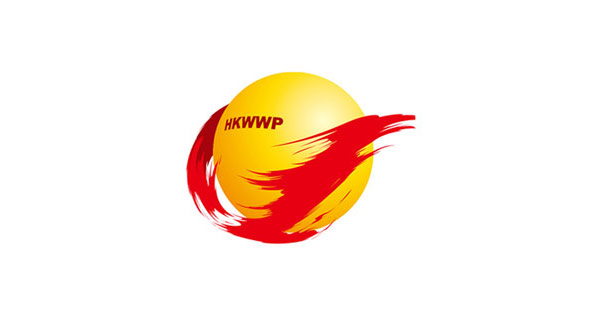 ���F���A�������k�w�̧C�u��A�O�ٰ�h�u�H���v�q�C ��ƹϤ�
���F���A�������k�w�̧C�u��A�O�ٰ�h�u�H���v�q�C ��ƹϤ��i���j��F���x�|�P��F�|ij1��11��q�L�A�N�k�w�̧C�u������ѨC�p��34.5���W�ܨC�p��37.5���C�p��ߪk�|�q�L�A�N��5��1���I�C�����k�w�̧C�u��W�T8.7%�����ӳ̰��A�ݦ��[�T�ܤj�A��h�u��3���A�̵Lij����O����h���u�J�o�q�ä��h�C�]���U��������h�h�W�A�����n�˰Q�̧C�u�ꪺ�վ����A�W�[���u�J���~�S�A�F����n�a�Y���d�~�P���q�A����O�٥~�P�u�H���v�q�A�P�i���|�M�ӡC
����k�w�̧C�u���2011�~5��1��}�l��I�A�w�����~28���A�C��~�@�@���˰Q�M�վ�A2013�~�B2015�~�B2017�~���O�դɦ�30���B32.5���B34.5���C
���e�̧C�u��[�T�h�����q�ȡC�����Ҥ�̪��ij�̤֥[��38���A������ٻ���36���C�g�L�}���Կ���A�T�w��37.5���A�P�Ҥ�n�D���u�Ȯt�v5�@�l�A�[�T������q�ȡC
����k�w�̧C�u��A�Y�ϥ[�ܨC�p��37.5���A���ݩC�����C�ثe��a��a�Φa�Ϫ��̧C�u��A�H�䤸�p�A�x�W��38.8���B����59.5���B�饻��63.5���C���y�Ĥ@�ӳ]�w�̧C�u�ꪺ�s������88.6�䤸�A���~4��1��s�����k�w�̧C�u��N�զܬ�94�䤸�C
�h�~���A�����������֬I�|��ij�A���X�ͬ��u��C�p�� 54.7���A���������u��i�i���a�x�B�O�ٰ��ͬ������C
���~54.7���ݦ��s���ܰ��A�����⦨�@�H������~�]�u��1.1�U���A���o�@���C���ͬ��u������A���O�����W�[3����̧C�u�ꪺ1.46���C�i���A����̧C�u����ǡA�b���u�H�γҤO�Ȩ����L�Y���ͬ��A���۷��t�Z�C
�@�V�H�ӡA��W�[�̧C�u��A����`�{���|�[���g�����O�A����ټW�[�̧C�u���I�N�o�v�ť[�u�ꪺ�u���������v�A�̲L�`�n�V���O������C
�ƹ�W�A����۸���̧C�u��H�ӡA�õL�o�ͥ��~�]���ӭ˳��B�g�ٰI�h�����p�C�ۤϡA�g�ٳs�~�W���C����2017�~���g�ټW��3.8%�A2018�~�w�p���~�g�ټW��3.2%�A2018�~�Y9�Ӥ�q�Ȭ�2.5%�C�������J�b�����q�ȫ�A���M�����W�T�C��n�ݨ쪺�O�A����̧C�u���A���~�v�O���b3%���C�����A�X�G�����N�~�C�]���A���ɳ̧C�u�꦳�Q��h�Ҥu�A�]���Q�g�١B���|í�w�A�U������h�a�����ݫݡC
�ثe�O�w�B��������~�ݭn�ΰ_�X����̧C�u��@�����~�S�~��Ш�H�A�U��U�~�����H�⤣�����{�H�C�{�ɻ���̧C�u�ꪺ�Ҥu�A�۷������O�F���~�P�A�Ȫ��u�H�A����2��3�U�W�A�L�̬O�H�O�����W�̵L�v���O���@�s�A�]�O�̻ݭn�O�٪��@�s�C�]���A�F���n�Ӿ�d���A�Y����P�~�P���q�A�����հ��~�P�u���~�S�A����l�`�̩��h�Ҥu���v�q�C �]���D���s��ҥ[�^ �]�K���ۭ����׳�����12-1-2019�^
Further Increase Minimum Wage Benchmark to Protect Economic Well-being of Low-paid Workers
�iĶ��jThe Chief Executive in Council endorsed on January 11 the increase of the statutory minimum wage (SMW) from HK$34.5 per hour to HK$37.5. Subject to the approval of the Legislative Council (LegCo), the revised SMW rate will come into force on May 1.
At first glance, the record-high 8.7 per cent increase seems to be a drastic leap in minimum hourly wage. The actual increase, however, is merely HK$3. Grassroots who have the least bargaining power in negotiating remuneration packages can barely benefit from this minimum wage hike.
Therefore, different sectors of the society should be more sympathetic with those who suffer in poverty. Also, a review on the adjustment mechanism of SMW and an increase in low-paid workers' wage is necessary. The government must take the lead and supervise its outsourced contractors, so as to effectively safeguard the rights of outsourced workers and ultimately promote social harmony.
SMW has come into effect since May 1 in 2011 at an initial rate of HK$28 per hour. It is reviewed biennially, and was subsequently raised to HK$30 per hour in 2013, HK$32.5 per hour in 2015 and HK$34.5 per hour in 2017.
Previously, most of the minimum wage hikes lagged behind inflation rates. This time, unionists suggested to raise the minimum wage to at least HK$38, with employers making their counter-offer at HK$36. After some intense negotiations, a deal was struck at HK$37.5. The rate is only HK$0.5 below what the unionists bargained for, and has slightly outpaced inflation.
Even though the local SMW is now increased to HK$37.5 per hour, it is still at a low level. Looking at other countries or regions, the current minimum wages in Taiwan, South Korea and Japan are around HK$38.8, HK$59.5 and HK$63.5 respectively. In New Zealand, the first country in the world to embrace the idea, the minimum wage is now at approximately HK$88.6. It will be further raised to about HK$94 in April 1 this year.
At the end of last year, the non-governmental organisation Oxfam Hong Kong proposed the introduction of an hourly living wage of HK$54.7, in the hopes of enabling employees and their families to make a reasonable living and secure a decent standard of living. An hourly rate of HK$54.7 may seem to be a lot, but when converted as the income of a one-person household, it is merely HK$11,000 per month.
However, this proposed living wage is still 1.46 times higher than the minimum wage, which has been hiked by HK$3 already. It is obvious that the SMW rate in Hong Kong is insufficient to let employees to earn a dignified living through labour and hard work.
Employers have always believed that an increase in minimum wage will bring financial burden to businesses. It is even claimed that minimum wage hikes will trigger a ripple effect, with those making more than the minimum wage asking for a raise. They believe the increased costs would ultimately be shifted onto consumers.
In fact, SMW has not caused any business closures or economic recessions in Hong Kong since its implementation. On the contrary, our economy have seen steady growth year after year.
Hong Kong has seen a 3.8 per cent economic growth in real terms in 2017. GDP growth for 2018 as a whole is expected to be 3.2 per cent, while inflation rose to 2.5 per cent in the first 9 months of 2018.
As the economic growth is well above the rate of inflation, there should be a real rise in workers' wages. More importantly, Hong Kong has virtually seen full employment, as the unemployment rate has remained steady at a very low 3 per cent since SMW came in force. It is very clear that minimum wage increase is beneficial to both the grass-root workers, the economy and the society as a whole. The public should look at the issue with more positivity.
At present, employers in the security services and the food and beverages sectors have to offer wages of at least 1.1 times the SMW rate if they were to successfully hire workers. Many other industries are also facing a shortage of workers. A large proportion of the low-paid workers who are earning SMW rate only are employed by the government's outsourced contractors. These approximately 20,000 to 30,000 workers are the least competitive ones in the labour market. At the same time, they are the most needy group.
Thus, the government should take up the responsibility and urge its outsourced contractors to lift the wages of their workers, thereby protecting the rights and interests of the workers at the bottom.��Jeffrey Tse (ywc_jeffrey@hotmail.com)
Exercise
1. ���a�Ͳ��`��
2. �۹��H�h
3. �h�a���e / �h�a�u
4. ���ӧP�� / �P�Y
5. ����
Answer
1. gross domestic product (GDP)
2. self-employed persons
3. poverty threshold / poverty line
4. subcontractors
5. commission

